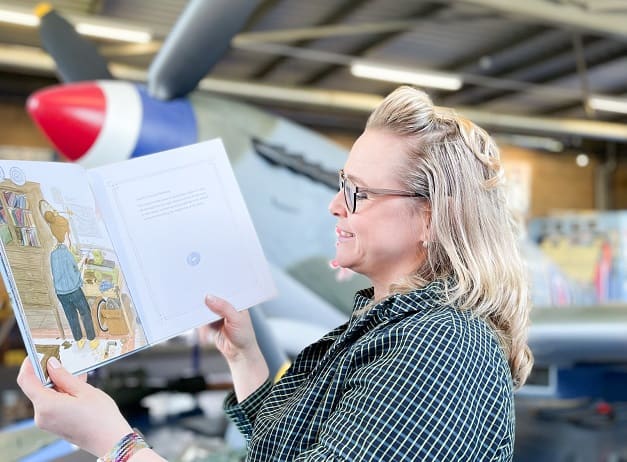
World Book Day each year sees a flurry of children’s books being published on the same day and I wasn’t going to let Beatrice Shilling: The Girl Who Could Fix Anything go under the radar.
The celebration of Beatrice Shilling (b.1909 – d.1990) a heroine of women’s engineering and her triumphant invention in 1941 that saved the Spitfire and the Hurricane aircraft following the discovery during the Battle of Britain in 1940 that fighter planes with Merlin engines (such as the Hurricane and Spitfire) would stall when the plane went nose-down to begin a dive resulting in a negative g-force that would flood the engine’s carburettor!! RAF engineers had been utterly stumped, but it was Beatrice who found the answer.
Having grown up in a military family with many great uncles and both grandparents having served in World War II, as a child I had always been drawn to stories about the war. Sadly most of these heroes have now passed on, but thanks to our wonderful children’s primary school, local museums and our own family history, my children have a very good appreciation of this era of our not too distant history. I live in Ramsgate (we can see France on a clear day). Our Royal Harbour saw a large number of small boats set off across the English channel to rescue our soldiers and allies from the French beaches as part of D-Day in June 1944.
RAF Manston was a vital landing ground during WWII for bomber crews due to its large and long runway. With its situation so close to the European coast, the airfield was not only heavily bombed, but also became a last resort destination for aircraft heavily damaged from ground fire, air attack or collisions… hence some of the ‘graveyard’ portions of war planes scattered around the airfield even today.
On the site today are two amazing aircraft museums – The RAF Manston History Museum and The Spitfire and Hurricane Memorial Museum, both with real aircraft to see, a huge amount of history on display, and in some cases visitors can climb on board aircraft to feel what it was like to be in the boots of a WWII pilot!! Totally awesome and a great trip out.
About the book
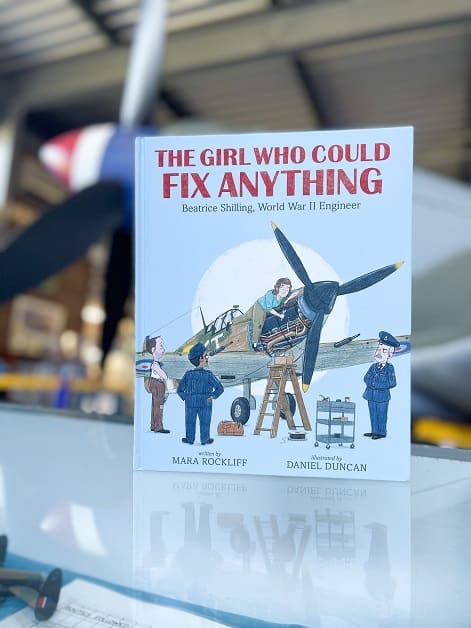
‘The Girl Who Could Fix Anything’ is a beautiful hardback written with engaging style by Mara Rockliff, with gorgeous endpapers featuring mechanical parts, printed on high quality paper, with the some of the most incredibly thoughtful, colourful and thorough illustrations by Daniel Duncan that I have ever seen in a non-fiction children’s book aimed at 4+ year olds (KS1).
The story starts with Beatrice as a young girl, she’s wandering through her home town and rather unlike most children who might head to the sweetshop with a bit of pocket money, she is seen coming out of the local hardware shop, face lighting up with glee, holding a sparkling new wrench. The illustrator has captured what must be an early 1920s scene in England with smoke billowing from chimneys, old motorcars on the road, adults wandering with hats on and the children gazing and pointing at the goodies in the confectionary shop. I also noticed that Duncan does that wonderful thing I love about children’s books whereby if you look very carefully, you can see little humorous events going on in the background, in this case between a cat and some pigeons. What is so wonderful is that the vibrant and characterful illustrations perfectly blend to tell the story throughout the book.
Beatrice’s journey to becoming a world famous engineer starts with her early passion for making and fixing things, and taking things apart to see how they work. Before long she’s fixing the wireless, and even motorbikes – her great love! The reader learns that it was Beatrice’s mother who had actually believed in her so much that she had taken Beatrice to London to become an apprentice engineer for a woman called Miss Partridge, and from then on she was encouraged to go to university. The book has a perfect double spread illustration of Beatrice as she walks into a lecture at university, the only woman, and the mixture of reactions from the all male students is a right picture! Go Beatrice!
Today, women in this country fight against discrimination whether for equal pay, access to roles that have traditionally be given to a man, or to be given opportunities that still seem have their access routes via a ‘boys club’ inner circle. These days, thankfully, we see women at work in most occupations and there is a decline in the number of women staying at home to be a full-time ‘housewife/mother’. Almost 100 years ago though, in the 1930s, Beatrice was trying to break down barriers in a very different world, where women were expected to stay at home and raise a family, and if they ‘must’ work, then it would be in domestic service, as a nurse, or in an administrative job, e.g. a secretary. Only a few broke the mould. Even though Beatrice was highly qualified, her first role with the Royal Aircraft Establishment was in administration, writing handbooks about plane engines. The illustration captures Beatrice’s mood, as she gazes glumly out of the window sitting at a large wooden desk at a typewriter… looking thoroughly bored.
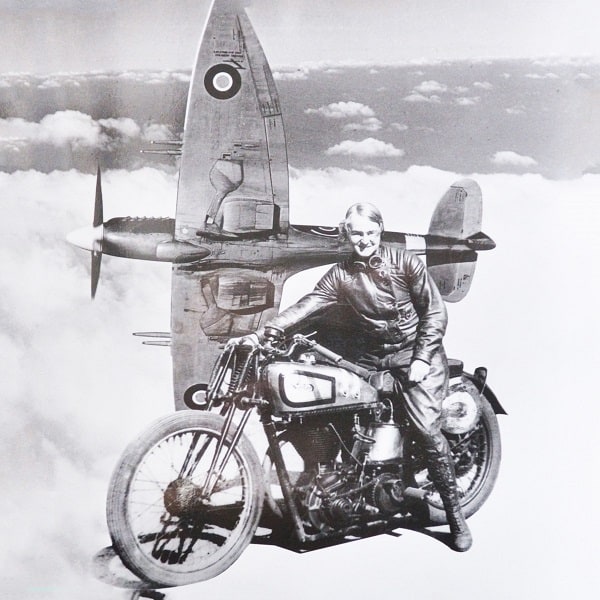
However, empowered girls never give up! The reader gives a cheer as Beatrice is given a chance in the Engine Department. There, she meets the man who would become her husband, a fellow engineer named George. Beatrice has landed on her feet at last and is surrounded by what seem to be a supportive team who treat her an equal. Then Britain went to war in 1939, and there was a problem that nobody could solve – the Merlin engines in Hurricane and Spitfire aircraft were sputtering or stopping during mid air combat with the Germans. The RAF engineers were at a loss, but Beatrice came up with the solution, which is known today as ‘Beatrice’s Orifice’… (not named as such in the story!) There are some beautiful whole page illustrations of dog fights, really stunning artwork. The story concludes happily with Beatrice and George enjoying flying together after the war.
Of course, this was not Beatrice’s only accomplishment in her stellar career. There is a more in-depth story of Beatrice’s life by the author in the last few pages; selected sources are also included for further reading and lesson planning.
This is a beautiful story that will connect children to the history of World War II through a different lens. The illustrations elevate the messages within the story and are so engaging that a child who might not quite be able to read themselves, or a child who finds reading a challenge, will enjoy them so much they’ll be inspired to ask questions to find out more about the story. Great for bookshelves at home, school and public libraries.
My trip to the RAF Manston Spitfire and Hurricane Memorial Museum
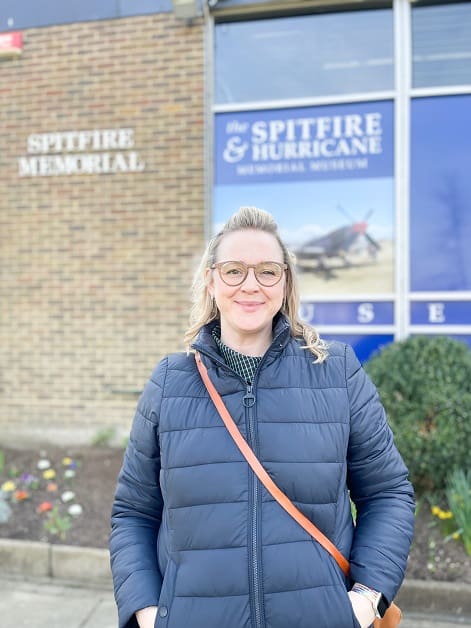
One of the reasons I am so excited about this book, is that I have been visiting this museum again and again over the last 25 years, with my own older relatives and now my own young children. As I mentioned at the start of this post, RAF Manston was firmly on the front line when WWII broke out in September 1939. It is very exciting to grow up around such tangible history. This wonderful local museum, visited by coach loads of tourists and school children throughout the year, houses both a Hurricane and a Spitfire. The Supermarine Spitfire Mk. XVI (LF) TB752 in the museum was made in 1944 and had 4 kills during WWII. The Spitfire was flown by a Canadian airman and was the last plane to have shot down a German fighter plane in the war! There is a large collection of memorabilia from the pilot and his crew next to the plane including uniforms, artwork, photographs, log books and more.
Chairman of the museum, Simon Collins, very kindly took me closer to the Spitfire engine and explained how the fuel was stored in the top main fuel tank in front of the pilot’s cockpit. This was extremely hazardous if the plane was hit, as the tank was situated just in front of the pilot’s windscreen! Many pilots suffered horrific burns injuries and even lost fingers during cockpit fires trying to eject from the aircraft. Many were treated in nearby East Grinstead burns unit where, according to Simon, the pilots were nicknamed ‘the guinea pigs’ as this was where much of the experimental burns treatment we know today was pioneered during WWII. Simon explained how the fuel was fed through the engine system and where ‘Beatrice’s orifice’ was installed. So brilliant to be able to see this for myself after reading all about it! Here’s a photo of Beatrice on her motorbike next to some photos I took of the Spitfire engine at the museum.
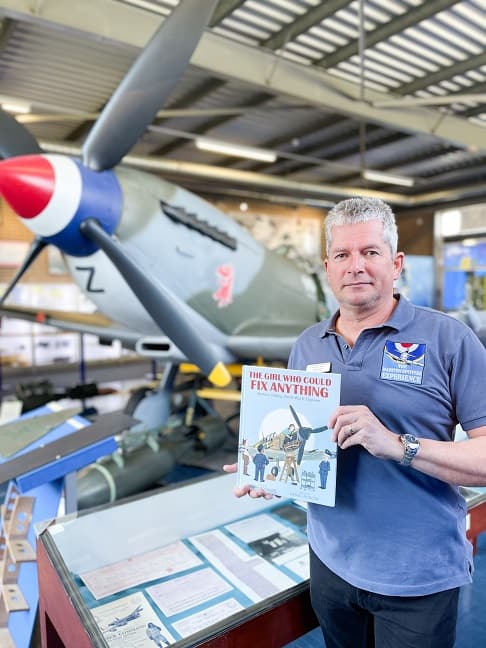
Our local schools visit the museum frequently as part of their curriculum learning about local history and WWII. Great news is, there are some amazing plans for our local treasure… a new funding drive is about to launch to raise £20k to build an extension onto the museum to facilitate an education centre for local schools to come and learn from the museum’s own instructors and experts about how World War II was fought high above our local skies. There are also plans for new aircraft exhibits that children will be able to sit in and get a real feel for what it was like to be a pilot. I hear from Simon that one of the most coveted donation carrots is a flight in a WWII fighter plane! Very exciting. Do follow them on Facebook (links are below) and I guess, set your notifications to ‘on’ if you don’t want to miss out!
The team at the museum very kindly asked me whether I’d like to fly the Spitfire simulator, to actually experience what it is like to fly a high powered WWII fighter from the safety of the ground! I have always wanted to do this, and jumped at the chance, especially as my instruction was the legendary WWII veteran Lancaster bomber pilot in the RAF’s Bomber Command (75(NZ) Squadron, Gerry Abrahams now aged 99! Gerry is a local hero who flew 31 sorties during WWII, which included one particular bombing mission over Germany when one of his aircraft engines got shot away by the German Luftwaffe! Gerry had certainly heard of Beatrice Shilling and chuckled cheekily when he mentioned the famous name for her invention, however interestingly he hadn’t heard of her until many years after World War II had ended.
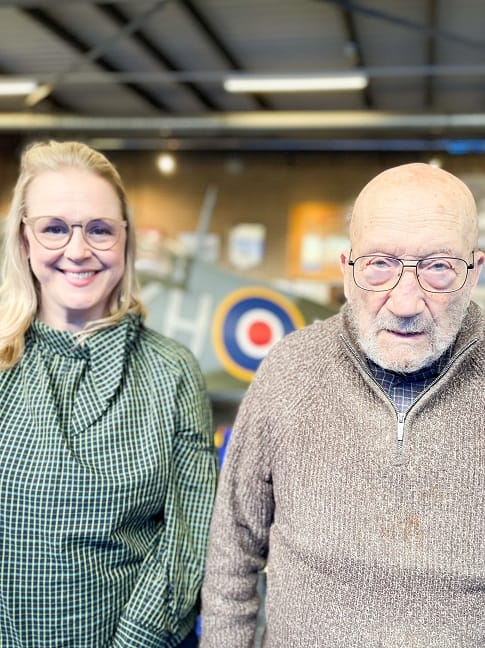
I had an amazing Spitfire simulator flight with Gerry – handling the Spitfire was not at all as I had imagined it to be. There was quite a bit to remember, even though Gerry was talking to me through the microphone throughout the flight. The screens wrap around in front of the cockpit so you can see your flight path around you. My flight was from Biggin Hill, up to the Shard in London, under a bridge (I didn’t crash!) and then onto RAF Manston to land. I will never underestimate the fitness levels a pilot needs to fly. After 30 minutes my legs were like jelly from holding the rudder straight with my feet. I knew I must be doing ok occasionally when Gerry would fold his arms and lean back on his chair, but the minute I let my guard down he was back on the mic ‘pull up’, ‘nose down’, ‘less on the throttle’…Phew! According to Gerry, a Spitfire could carry enough fuel for about 2 hours flight. Whilst flying in the simulator I would try to imagine being a young man with barely any flying experience during the war, up there facing enemy fire and having to do rolls and loops to survive and kill the enemy, then make it back home. It was absolutely mind-blowing. An amazing opportunity. I got a few ‘very goods’ from Gerry and a flight certificate, so I’m very happy! See below for your chance to win a free Spitfire simulator experience!
The museum is a vital destination to view an incredible collection that commemorates the brave men and women who served in the air armed forces during WWII. Displays include uniforms, artwork, and other war objects that tell the stories of the aircrew (diaries and logs of the very young airmen, some of whom tragically didn’t return), an iconic Spitfire MkXVI and Hurricane MkIIc.
Thank you Simon, Robert, Gerry and the rest of the team for a memorable and fun couple of days. I’m also pleased to report that ‘The Girl Who Could Fix Anything’ will soon be available in the museum gift shop via Tales on Moon Lane children’s bookshop in Ramsgate. Great news!
Visit the museum:
Free admission. Free parking for both cars and coaches. Volunteer run, donations welcome.
https://www.spitfiremuseum.org.uk
Enter my giveaway competition
Win lots of RAF Manston Spitfire museum goodies including a Spitfire simulator flight with a museum instructor, as well as a copy of the book!
Here’s what you can win…
1 x 30 minutes flight in the Spitfire simulator with an instructor (kindly donated by the museum, normally £30) – not suitable for under 16’s
1 x Hardback copy of ‘The Girl Who Could Fix Anything: Beatrice Shilling, World War II Engineer’ by Mara Rockliff and Daniel Duncan (kindly donated by our local award-winning children’s bookshop, Tales on Moon Lane in Ramsgate, normally £12.99) – for ages 4+
1 x Manston Spitfire Museum leather bookmark
1 x Spitfire keyring
1 x Supermarine Spitfire MK.11 flying glider
1 x waterproof paper RAF Manston Spitfire & Hurricane Museum dinky map
1 x Battle of Britain rub down transfer activity pack
1 x Supermarine Spitfire MkXVI (LF) Spitfire and Hurricane Museum A4 print by Spencer Trickett
1 x Supermarine Spitfire MkXVI museum postcard with illustrations by Paul Grundy
To enter the draw please follow this link: https://www.instagram.com/the.kids.books.curator/

